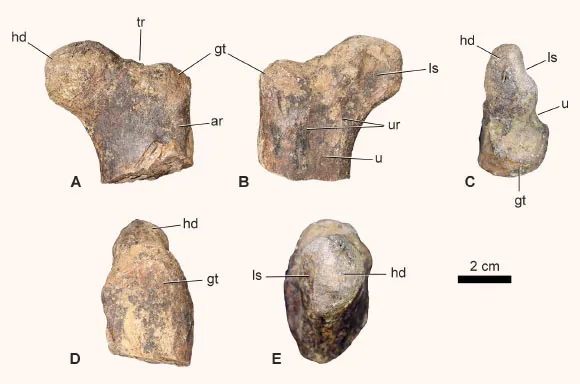
Unveiling a Jurassic Treasure: Oldest Cerapodan Dinosaur Discovered in Morocco!
2025-05-05
Author: Ming
A Groundbreaking Discovery in Paleontology!
Paleontologists from Sidi Mohamed Ben Abdellah University, along with teams from the University of Birmingham and the Natural History Museum in London, have made a sensational find: the world's oldest cerapodan ornithischian dinosaur, dating back to the Middle Jurassic period.
What Are Cerapodans?
Cerapodans are a dynamic group of ornithischian dinosaurs known for their vast diversity and global presence. According to Dr. Susannah Maidment from the Natural History Museum, these dinosaurs played a crucial role in Cretaceous ecosystems, evolving from bipedal forms in the Jurassic to the dominant herbivores of the Late Cretaceous, including the well-known hadrosaurids and ceratopsids.
Why is This Discovery Important?
Despite the wealth of knowledge about Cerapodans from the Cretaceous period, their Jurassic presence remains poorly documented. The new specimen—a fragment of a left femur—was uncovered in 2020 from the fossil-rich El Mers III Formation in Morocco, shedding light on this understudied era. This fossil is not just a rarity; it's the second ever discovered from the Middle Jurassic globally.
Fascinating Details of the Fossil
Dating between 165 and 160 million years ago, this bone exhibits unique features, such as a femoral head on a distinct neck, which firmly connects it to the Cerapoda clade, differentiating it from other neornithischians. This characteristic underscores the evolutionary significance of the plant-eating dinosaurs of its time.
A Hub of Fossil Discovery
The El Mers III Formation is known for producing significant fossils, including the world’s oldest ankylosaur, Spicomellus afer, and one of the earliest stegosaurs, Adratiklit boulahfa. Experts emphasize that further exploration of this region is vital for unraveling the evolutionary history of ornithischian dinosaurs during the Middle Jurassic.
Published Research Adds to Our Knowledge
The findings were meticulously documented in a paper published on March 12, 2025, in the journal *Royal Society Open Science*, leaving the door open for more thrilling discoveries in this spectacular field of study.






 Brasil (PT)
Brasil (PT)
 Canada (EN)
Canada (EN)
 Chile (ES)
Chile (ES)
 Česko (CS)
Česko (CS)
 대한민국 (KO)
대한민국 (KO)
 España (ES)
España (ES)
 France (FR)
France (FR)
 Hong Kong (EN)
Hong Kong (EN)
 Italia (IT)
Italia (IT)
 日本 (JA)
日本 (JA)
 Magyarország (HU)
Magyarország (HU)
 Norge (NO)
Norge (NO)
 Polska (PL)
Polska (PL)
 Schweiz (DE)
Schweiz (DE)
 Singapore (EN)
Singapore (EN)
 Sverige (SV)
Sverige (SV)
 Suomi (FI)
Suomi (FI)
 Türkiye (TR)
Türkiye (TR)
 الإمارات العربية المتحدة (AR)
الإمارات العربية المتحدة (AR)